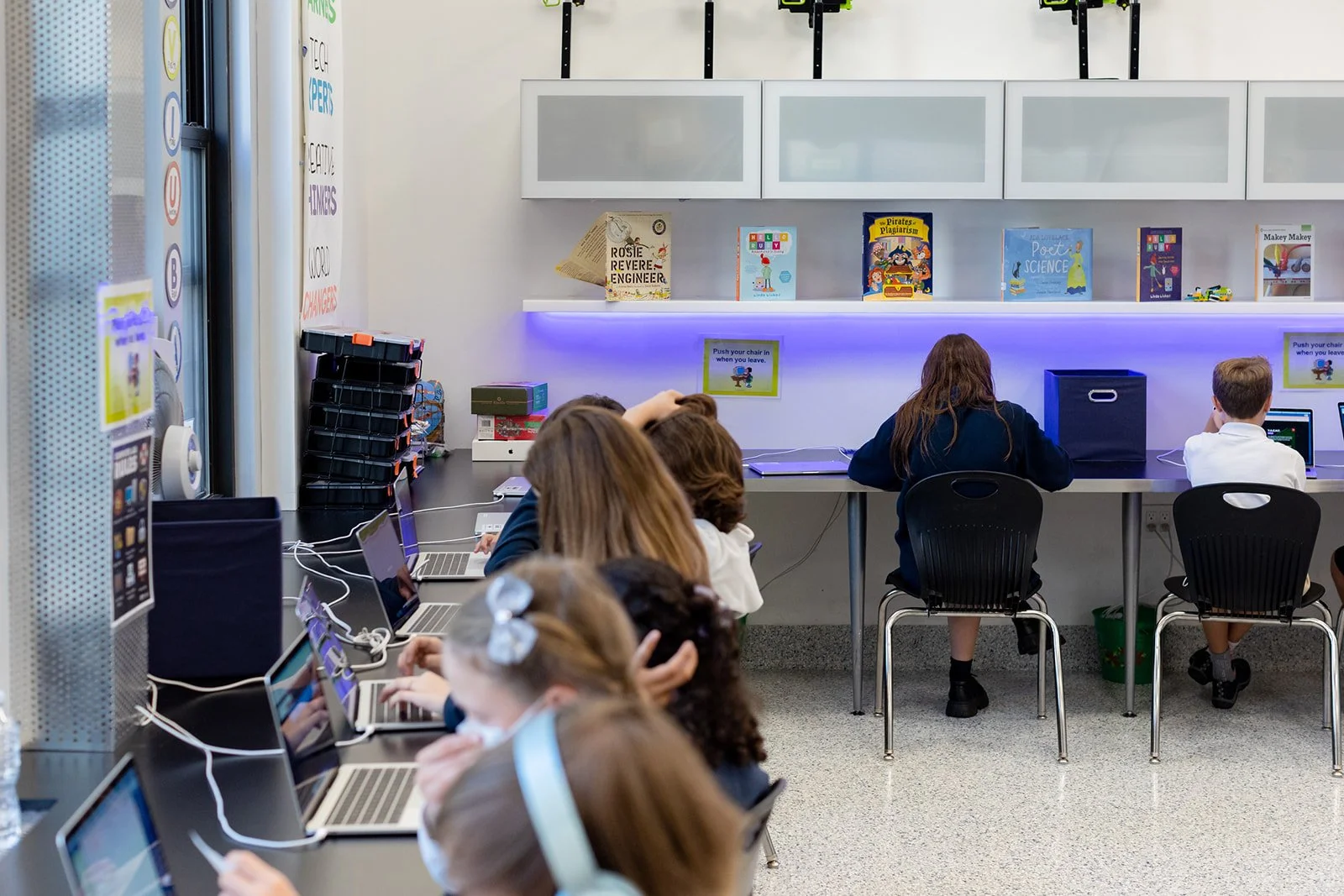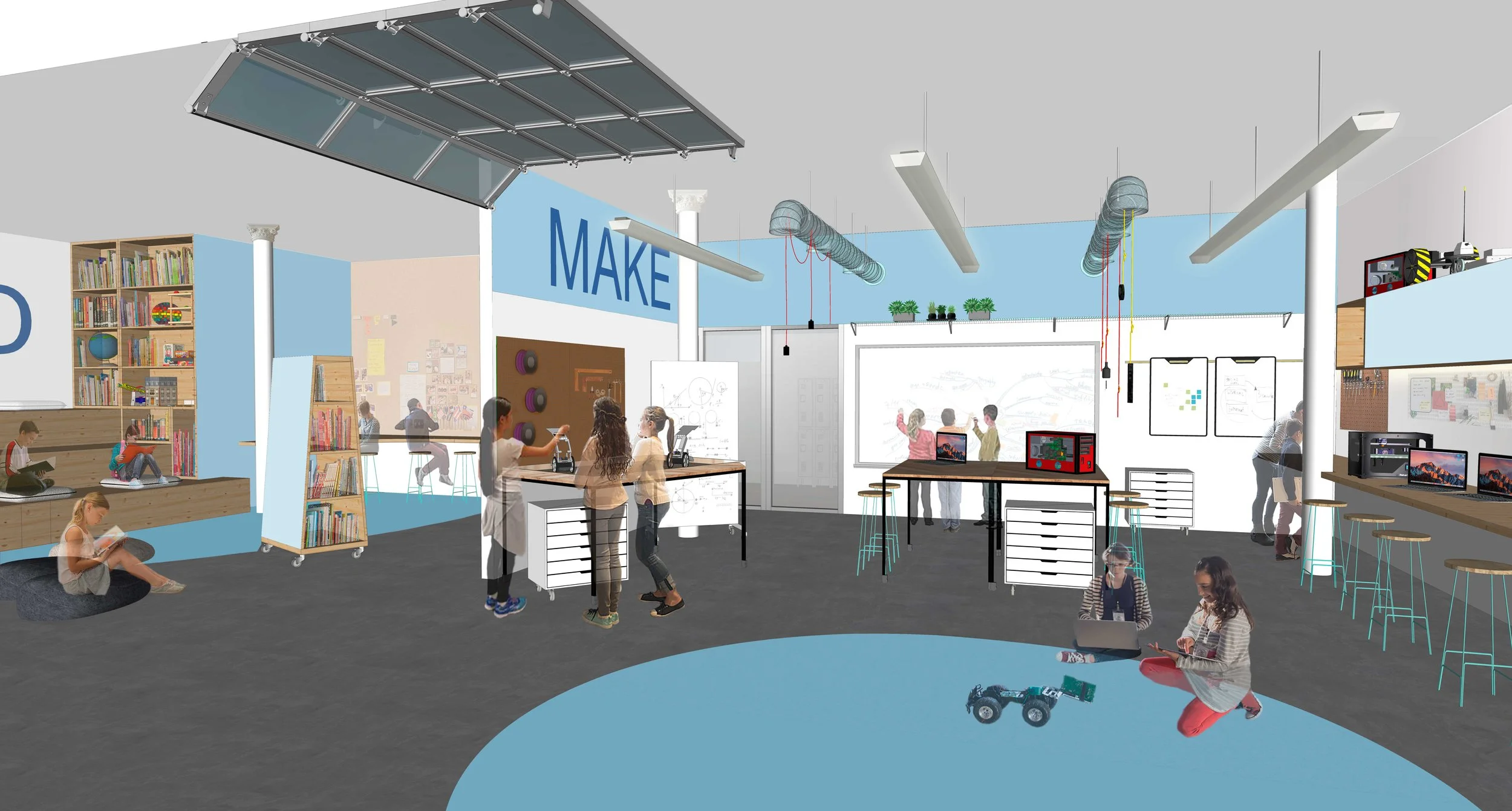Science Labs + Maker Spaces
One of the activities that we hear most frequently discussed in the educational environments for students of all ages, in or after school, is how to get kids making stuff and where should that stuff get made. Kids want and need hands-on experiences and educators want to give it to them. But what kind of environments work best and inspire true experimentation?
Background
The science labs and maker spaces that our clients want are engines of excitement; they function as part kitchen, woodshop, art studio, robotics lab, sewing studio, and media spaces. They spill out of classrooms into hallways and playgrounds.
Design Challenge
The standard classroom often isn’t big enough to allow for the meeting area, work area, and storage areas required to allow for students to experiment with an idea and have it develop over time. The technology needs as well as water and light often aren’t available in older school spaces and often new construction isn’t an option.
Design Strategy
We work closely with out clients to understand the types of activities they want to support, whether it is an elaborate water table for a pre-school or wood construction experiences for a middle school. The actual activities anticipated impact the type of construction required since these intensively used spaces put demands on the mechanical and structural systems that are far beyond the standard classroom. Working with a design-build approach, we are able to work those demands into the design so that they are not an after-thought and are therefore more affordable. We work closely with clients to create donor materials so that prospective donors understand the need for these newer types of educational spaces and the costs associated with them.
Impact
Science labs and maker spaces offer children and adults ways to work collaboratively and explore problem solving in new ways. This new educational approach is thought by many to develop critical skills that are needed to solve the problems confronting today's society. Often the mechanical, technical and structural demands of the science lab and maker space force institutions to put off building these spaces but finding ways to get these spaces built is important for the education of the next generation.










